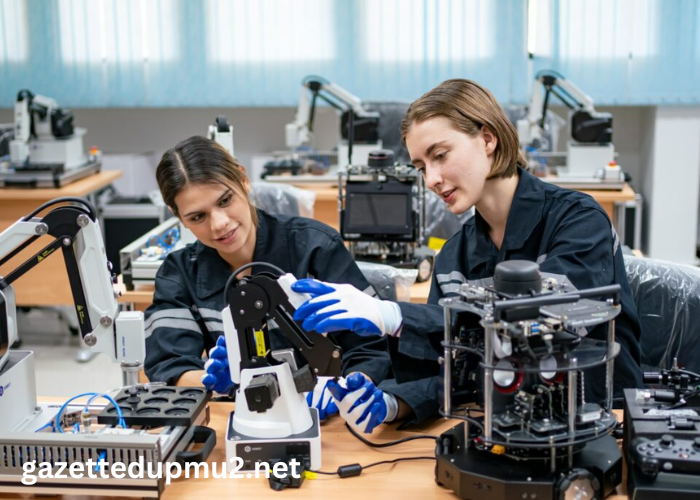In the annals of human history, certain epochs stand out as transformative periods that reshaped the world in profound ways. The Agricultural Revolution marked the shift from nomadic hunting and gathering to settled farming, while the Industrial Revolution ushered in an era of mechanization and mass production. Today, we stand on the precipice of another such epoch: the Technological Revolution. As our world becomes more interconnected and digital by the day, it is increasingly clear that the future belongs to the tech-savvy. In this article, we will explore the trends and technologies driving this revolution and take a glimpse into what the tech-savvy tomorrow might look like.
The Technological Revolution: A Historical Context
To understand the Technological Revolution, we must first appreciate the historical context that has led us here. Over the past few decades, technology has become an integral part of our lives, transforming the way we work, communicate, and even think. The seeds of this revolution were sown in the mid-20th century with the invention of the transistor and the birth of the digital age.
The advent of the personal computer in the 1980s brought computing power into the hands of individuals, setting the stage for the Information Age. The World Wide Web, which emerged in the early 1990s, revolutionized how we access and share information. Smartphones, introduced in the 2000s, turned these powerful computers into portable devices, further blurring the lines between the physical and digital worlds.
As technology advanced, it began to infiltrate every facet of society. Industries from healthcare to finance to transportation were disrupted, and new digital-native companies like Google, Amazon, and Facebook emerged as global giants. The rise of artificial intelligence (AI) and the Internet of Things (IoT) added new dimensions to our tech-infused world, enabling machines to think, learn, and communicate like never before.
Today, we find ourselves at a pivotal moment in this ongoing revolution. The convergence of various technologies is accelerating change at an unprecedented rate, promising to reshape our world in ways that are both exciting and challenging. To get a glimpse of what this tech-savvy tomorrow might entail, let’s explore some of the key trends and technologies driving this revolution.
Artificial Intelligence and Machine Learning
Artificial intelligence, often abbreviated as AI, is perhaps the most transformative technology of our time. It refers to machines or software that can perform tasks that typically require human intelligence, such as problem-solving, understanding natural language, and recognizing patterns. Machine learning, a subset of AI, involves training machines to improve their performance on a specific task through data analysis.
AI has already permeated many aspects of our lives. Virtual assistants like Siri and Alexa use natural language processing to understand and respond to our voice commands. Recommendation algorithms on platforms like Netflix and Amazon use AI to suggest movies and products tailored to our preferences. In healthcare, AI is helping diagnose diseases and predict patient outcomes with remarkable accuracy.
As AI continues to advance, its applications will only expand. In industries like finance, AI-driven algorithms are revolutionizing trading and risk assessment. In transportation, self-driving cars are becoming a reality, promising safer and more efficient roadways. The potential for AI to revolutionize education, energy, and environmental sustainability is vast, and its impact on the job market and society as a whole will be profound.
The Internet of Things (IoT)
The Internet of Things refers to the network of interconnected physical objects embedded with sensors, software, and other technologies that enable them to collect and exchange data. These objects can range from everyday items like refrigerators and thermostats to industrial machinery and infrastructure like smart cities.
The IoT has the potential to revolutionize how we interact with the physical world. Smart homes, for example, allow homeowners to control their lights, appliances, and security systems remotely through smartphone apps. In agriculture, IoT sensors can monitor soil conditions and weather to optimize crop yields. In healthcare, wearable devices can track vital signs and provide real-time health insights.
The growth of the IoT is exponential, with billions of devices already connected and that number projected to increase dramatically in the coming years. This connectivity will create vast amounts of data, which, when analyzed with AI, can lead to more efficient resource management, improved decision-making, and enhanced user experiences.
5G Connectivity
The rollout of 5G (fifth-generation) wireless technology is another pivotal development in the Technological Revolution. 5G promises to deliver significantly faster and more reliable internet connectivity, with low latency (the time it takes for data to travel between devices) and the capacity to support a massive number of connected devices simultaneously.
This leap in connectivity will unlock new possibilities in various domains. In healthcare, remote surgery and telemedicine will become more feasible with 5G’s low latency and high bandwidth. In the automotive industry, connected vehicles will communicate with each other and with traffic infrastructure, improving safety and traffic management. Augmented and virtual reality experiences will become more immersive and widespread, transforming industries from entertainment to education.
However, the widespread deployment of 5G also raises concerns about security and privacy, as the increased connectivity could provide more entry points for cyberattacks and data breaches. Addressing these challenges will be essential to fully realizing the potential of 5G.
Blockchain Technology
Blockchain, the technology behind cryptocurrencies like Bitcoin, is often associated with finance. However, its applications extend far beyond digital currencies. At its core, blockchain is a decentralized, immutable ledger that records transactions across a network of computers. This technology provides a high level of transparency and security, making it suitable for a wide range of applications.
One of the most promising uses of blockchain is in supply chain management. It allows for end-to-end visibility of products as they move through the supply chain, reducing fraud, ensuring product authenticity, and improving traceability. In the realm of voting and elections, blockchain can enhance transparency and security, potentially addressing concerns about electoral integrity.
Blockchain also has the potential to disrupt the way we handle identity verification, digital rights management, and intellectual property protection. As it continues to mature and evolve, blockchain technology could underpin a new era of trust and transparency in various sectors.
Biotechnology and Genetic Engineering
Advancements in biotechnology and genetic engineering are opening doors to a future where we can not only treat but also prevent diseases at the genetic level. CRISPR-Cas9, a revolutionary gene-editing tool, allows scientists to modify genes with unprecedented precision. This technology has the potential to eradicate genetic diseases, enhance crop yields, and even combat climate change by engineering organisms to sequester carbon.
In healthcare, personalized medicine is becoming a reality, where treatments are tailored to an individual’s genetic makeup. This promises more effective and less invasive treatments with fewer side effects. In agriculture, genetically modified organisms (GMOs) can help address global food security challenges by creating crops that are more resistant to pests and environmental stressors.
However, the ethical and regulatory implications of genetic engineering are significant. As we gain the power to manipulate genes, we must carefully consider the ethical boundaries and potential consequences of our actions.
Renewable Energy and Sustainability
As concerns about climate change intensify, the push for renewable energy sources and sustainable technologies has gained momentum. Solar and wind power have become increasingly affordable and efficient, making them viable alternatives to fossil fuels.





